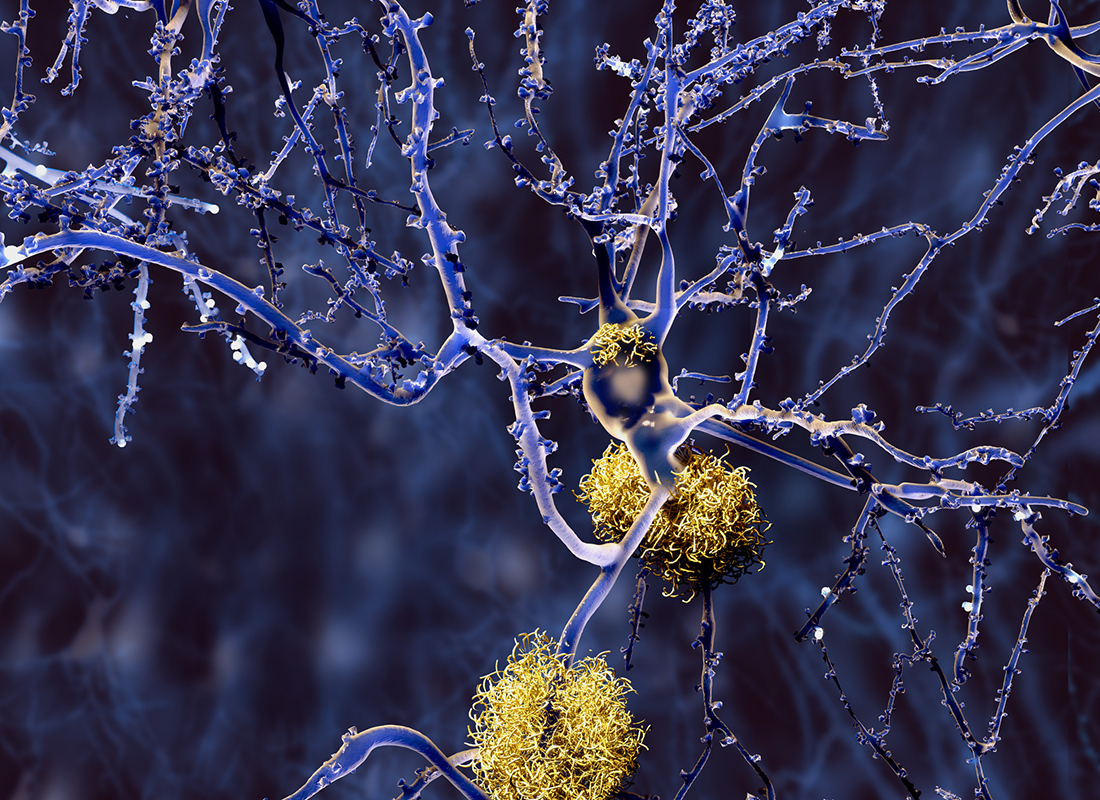Can Ophthalmic Biomarkers Offer Insights into Brain Pathologies?
Protein levels in the vitreous humor may have the potential to support the diagnosis and staging of neurodegenerative diseases.

The quest for earlier, more effective disease diagnostics is never-ending—particularly with respect to Alzheimer’s disease (AD), whose diagnosis remains largely clinical. Although laboratory tests using blood1 or cerebrospinal fluid2 are available under the FDA’s Breakthrough Devices Program, they may be expensive or difficult to obtain. Furthermore, by the time patients are symptomatic enough to spur clinical investigation, pathological changes in the brain are generally well established and treatment options limited.3,4 As a result, research into alternative diagnostic approaches continues. Now, a group of researchers at Boston Medical Center has gone a step further in the evaluation of vitreous biomarkers for neuropathological conditions.
These conditions already show established links with eye diseases such as glaucoma, diabetic retinopathy, and age-related macular degeneration.5 In addition, the researchers’ own earlier work evidenced an association between poor cognitive function and decreased levels of AD-related biomarkers such as Aβ40, Aβ42, and total tau protein (tTau) in the vitreous humor of the eye6. To take the research one step further, the group sought to examine the potential correlation between brain pathologies and vitreous humor biomarkers.7 This time, their study included not only AD, but also chronic traumatic encephalopathy (CTE).
Although caused by repeated head trauma rather than age or genetics, CTE shares some characteristics with AD,8 including tau protein phosphorylation, neurofibrillary tangles, and the lack of definitive laboratory diagnostics other than brain biopsy or autopsy. This makes CTE another strong candidate for new diagnostic approaches.
Investigating Ophthalmic Brain Biomarkers
The retrospective study used 41 postmortem samples of brain tissue and vitreous humor—nine controls with a history of repetitive head injury but no disease pathology, seven with AD pathology, 15 with CTE pathology, and 10 with combined AD/CTE pathology.
The results? Two vitreous biomarkers, tTau and phosphorylated tau (pTau231), were significantly elevated in the AD and CTE groups and showed significant correlations with brain cortical levels of the proteins (negative in the case of tTau; positive in the case of pTau231). However, the combined AD/CTE samples did not display the same increase in tTau and pTau231 levels, a finding the study was unable to explain, though the researchers recommended further investigation.
Finally, neurofilament light chain protein (NfL), a well-studied biomarker of traumatic brain injury, was not diagnostic of CTE, but was significantly elevated in low-stage (I/II) disease relative to either no pathology or high-stage (III/IV) diseases. Therefore, although NfL may not be a candidate biomarker for CTE diagnosis, it may be able to support disease staging after diagnosis.
“To our knowledge, this is the first study to investigate the role of vitreous fluid biomarkers and link it to confirmed postmortem brain tissue pathological examination of AD,” said principal investigator Manju Subramanian, MD, in a recent press release9. “In addition, this is the first study to find a link between vitreous fluid biomarkers and confirmed CTE. Our findings provide further evidence to support the potential role of vitreous biomarkers in early diagnosis and prognostication of diseases like AD and CTE.”
An Eye to the Future
What does this mean for the lab and the future of neurodegenerative disease diagnosis? It’s likely that the move toward biomarker-based quantitative testing for such conditions will only accelerate and that clinical laboratories can look forward to further expansion of their testing options as biomarker research continues and commercial entities seek regulatory approval for novel diagnostics.
References:
- https://www.aafp.org/pubs/afp/issues/2022/0100/p79.html
- https://www.accessdata.fda.gov/cdrh_docs/reviews/DEN200072.pdf
- https://www.jneurosci.org/content/33/46/18008
- https://perspectivesinmedicine.cshlp.org/content/1/1/a006189
- https://alz-journals.onlinelibrary.wiley.com/doi/10.1016/j.jalz.2018.06.2856
- https://content.iospress.com/articles/journal-of-alzheimers-disease/jad181104
- https://content.iospress.com/articles/journal-of-alzheimers-disease/jad230167
- https://alzres.biomedcentral.com/articles/10.1186/alzrt234
- https://www.bmc.org/news/significant-correlation-found-between-vitreous-human-biomarkers-and-alzheimers-disease
Subscribe to Clinical Diagnostics Insider to view
Start a Free Trial for immediate access to this article